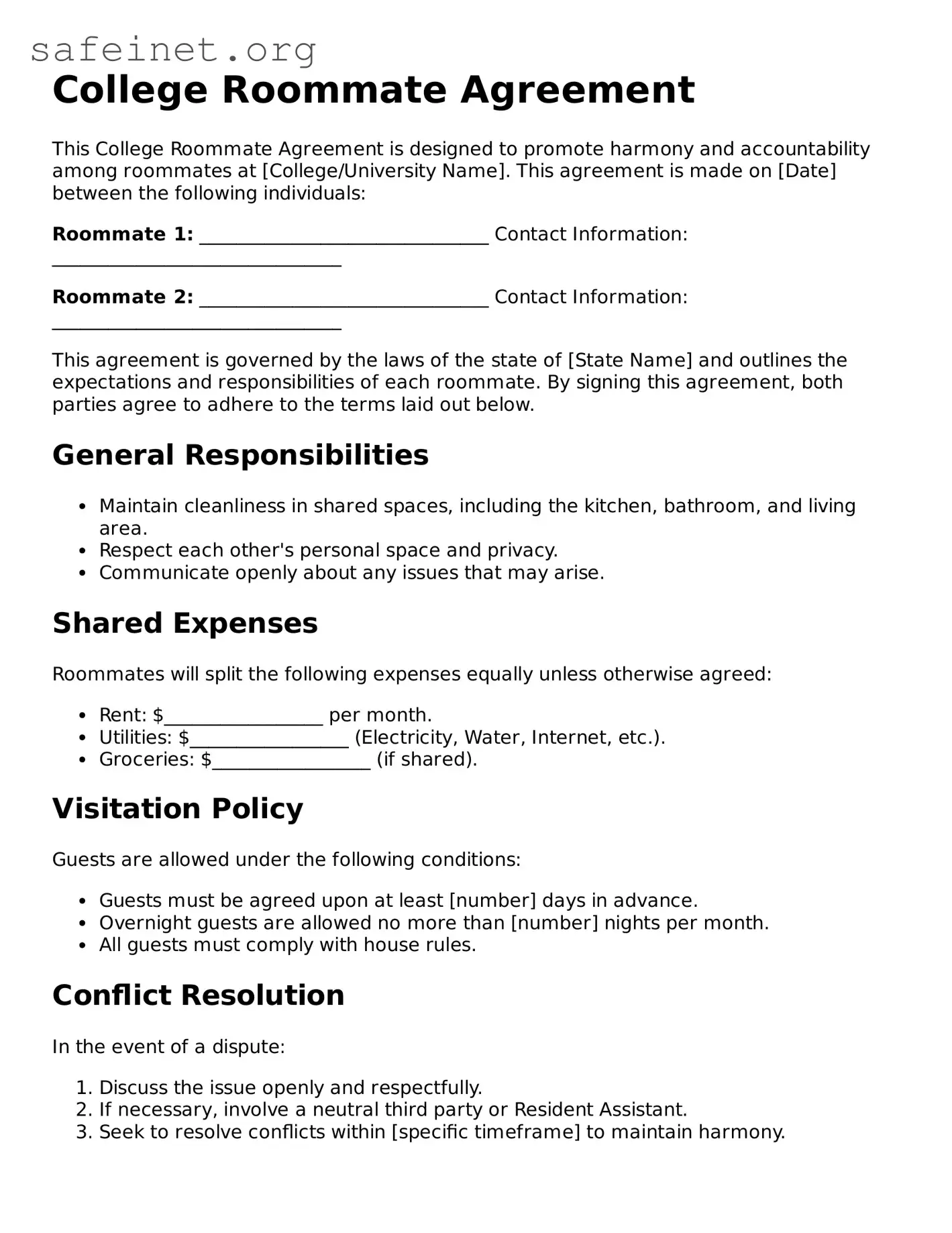What is a College Roommate Agreement?
A College Roommate Agreement is a written document created by roommates to outline various expectations and responsibilities associated with living together. This agreement helps establish a harmonious living environment by addressing areas such as chores, quiet hours, shared expenses, and personal space. It's an important tool for preventing misunderstandings and conflicts during the school year.
Why should I use a College Roommate Agreement?
Using a College Roommate Agreement is crucial for fostering a positive relationship between roommates. It encourages open communication and helps clarify expectations upfront. By discussing and documenting responsibilities and preferences, you can avoid potential disagreements later on. This proactive approach contributes to a more enjoyable living experience while in college.
What should be included in a College Roommate Agreement?
A comprehensive College Roommate Agreement typically includes several key elements: division of chores, cleaning schedule, quiet hours, guest policies, and how to handle shared expenses. It's also beneficial to include guidelines for personal space, any specific roommate preferences (like keeping the noise down during study hours), and conflict resolution strategies. Each roommate can add their personal preferences to ensure that everyone's needs are met.
How do we fill out a College Roommate Agreement?
To fill out a College Roommate Agreement, all roommates should gather for an open discussion. Start by reviewing each section together, discussing all points of view, and making sure everyone is comfortable with the decisions made. Write down the agreed-upon terms clearly. It's important that all roommates initial or sign the document to show that they understand and accept the terms. Consider revisiting the agreement periodically to accommodate changes or new challenges that arise during your time together.
What happens if we don’t use a College Roommate Agreement?
Choosing not to use a College Roommate Agreement can lead to misunderstandings and conflicts. Without clear expectations, disagreements about chores, guest policies, or noise levels can escalate quickly. This may create a tense living environment, potentially affecting friendships and academic focus. Ultimately, having this form in place can help prevent disputes and establish a respectful living situation.
Can we change the College Roommate Agreement once it’s signed?
Absolutely! A College Roommate Agreement is not set in stone. Life in college can be dynamic, so it’s perfectly acceptable to make changes as needed. If circumstances change, such as one roommate's class schedule or work commitments, all roommates should come together to discuss necessary adjustments. Make sure to document any changes clearly and have everyone sign again to acknowledge the new terms.
Where can I find a College Roommate Agreement template?
Many educational institutions provide templates for a College Roommate Agreement, which can often be found on their housing or student resources websites. Alternatively, you can easily find customizable templates online through various legal and educational resources. Choose one that suits your needs and adjust it based on the discussions with your roommates. Just ensure it covers all the essential points to facilitate a smooth living arrangement.
Is a College Roommate Agreement legally binding?
Generally, a College Roommate Agreement is considered a social contract rather than a legally binding document. It reflects the intentions and commitments of the roommates rather than formal legal obligations. However, it serves as a powerful reminder of your agreements, which can help maintain accountability among roommates. If serious issues arise, having a written agreement may offer some clarity, but it is not enforced by the law.
